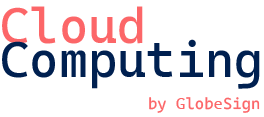Table of Contents
- Understanding Cloud Cost Management
- The Importance of Cloud Cost Management
- Best Practices for Cloud Cost Management
- Real-World Examples
- Conclusion
- FAQ
Understanding Cloud Cost Management
Cloud cost management refers to the processes, tools, and practices that businesses use to track, optimize, and forecast their cloud spending. Think of it as managing a bank account: you want to deposit wisely and avoid unnecessary withdrawals. Cloud computing operates on a pay-as-you-go model, meaning that as you consume more resources, your bill increases. This model can lead to unexpected costs if not monitored correctly.
The Importance of Cloud Cost Management
Effective cloud cost management is crucial for several reasons:
- Budget Control: It helps organizations stay within budget by providing visibility into spending.
- Optimization of Resources: It ensures resources are being used effectively and identifies any underutilized assets.
- Understanding Usage Trends: It allows businesses to predict future spending based on current usage trends, aiding in better financial planning.
- Ensuring Compliance: Many industries have compliance requirements concerning data storage and management, which can have cost implications.
Best Practices for Cloud Cost Management
To harness the full potential of cloud computing while keeping costs down, implement these best practices:
1. Establish a Budget and Track Spending
Just like managing personal finances, setting a budget is the first step in managing cloud costs. Determine how much your organization can allocate towards cloud services and continuously monitor spending against that budget. Many cloud providers, such as AWS and Azure, offer native tools to help track usage and expenses.
2. Utilize Cloud Cost Management Tools
Cloud cost management tools can help automate the process of monitoring and optimizing cloud expenses. Popular tools include:
- CloudHealth: Provides insights into performance and cost efficiency with a user-friendly interface.
- Cloudability: Focuses on financial management and controlling costs across multiple cloud platforms.
- Spot.io: Automates cloud infrastructure management to save costs on unused resources.
3. Implement Tagging Strategies
Tagging your cloud resources is essential for tracking expenses accurately. Tags are metadata labels that help you categorize resources based on departments, projects, or environments. A well-structured tagging strategy enables better visibility into costs and resource allocation, making it easier to identify areas for savings.
4. Monitor Resource Utilization Regularly
Regularly reviewing the utilization of your cloud resources can lead to significant cost savings. Identify and eliminate:
- Unutilized or underutilized resources, such as orphaned volumes or idle compute instances.
- Over-provisioned services, where you may have allocated more resources than necessary.
- Test environments left running during off hours that could be turned off.
5. Leverage Autoscaling
Autoscaling is a feature offered by many cloud providers that automatically adjusts the number of active servers based on the current load. This ensures that you pay only for what you use, dramatically reducing costs during off-peak times while ensuring performance during high-demand periods.
6. Choose the Right Pricing Model
Cloud providers offer several pricing models, including:
- Pay-as-you-go: Charges based on usage; ideal for variable workloads.
- Reserved instances: Offers lower rates in exchange for a commitment to use a specific amount of cloud resources over a longer term.
- Savings plans: Flexible plans that provide lower rates for committed usage over one or three years.
Evaluate your typical workloads and select a pricing model that aligns with your consumption patterns.
7. Optimize Data Transfer Costs
Data transfer can become a hidden cost if not managed carefully. To optimize these expenses:
- Use content delivery networks (CDNs) to serve data closer to users, reducing bandwidth costs.
- Minimize data transfer between different regions or cloud providers.
- Consider burstable instance types that allow you to manage spikes without incurring high transfer costs.
8. Educate Your Team
All team members, not just those in finance, should be aware of the costs associated with cloud usage. Conduct regular training sessions to inform teams about cloud cost management practices and the implications of their usage decisions. This cultural shift can lead to more responsible resource allocation.
Real-World Examples
Companies like Netflix and Airbnb have successfully implemented cloud cost management strategies. For example, Netflix relies heavily on AWS and employs sophisticated monitoring tools to analyze their spending. They optimize costs by using reserved instances and managing their content delivery through CDNs effectively.
Similarly, Airbnb utilizes tagging and automated reports to adjust its resource allocation based on demand patterns, ensuring they are not overspending on cloud services.
Conclusion
Cloud cost management is critical for businesses seeking to harness the full potential of cloud computing while avoiding budget overruns. By implementing the best practices outlined above, organizations can gain better control over their cloud spend, optimize resource usage, and ultimately enhance their ROI.
As cloud technologies continue to evolve, staying informed about trends and tools for cost management will be essential for achieving financial efficiency in your cloud strategy. Remember, managing cloud costs isn’t a one-time task but an ongoing process that requires attention and adaptation.
FAQ
What is cloud cost management?
Cloud cost management refers to processes, tools, and practices used by organizations to track, optimize, and forecast their spending on cloud services.
Why is cloud cost management important?
It helps organizations maintain budget control, optimize resource usage, understand usage trends, and ensure compliance with industry regulations.
How can I track cloud costs effectively?
By establishing a budget, using cloud cost management tools, implementing tagging strategies, and regularly reviewing resource utilization.
What are some tools for cloud cost management?
Popular tools include CloudHealth, Cloudability, and Spot.io, which help automate monitoring and optimize expenses.
What are billing models in the cloud?
Common billing models include pay-as-you-go, reserved instances, and savings plans, allowing businesses to choose what best fits their usage patterns.
